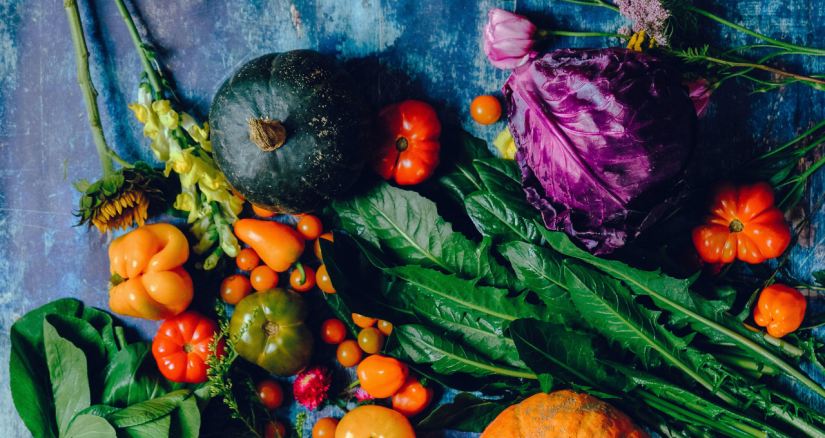
Getting to Know The Gut: Part 1 | Prebiotics, More Than Just Fiber
Digestive health is growing in popularity for pet owners and their pets. Feeding the microbes that are in the gut can have powerful benefits for the entire body.
The term prebiotics is defined as compounds in food that support the growth and activity of beneficial microorganisms, such as bacteria or fungi in the gastrointestinal tract; in other words, prebiotics is a source of food for the gut’s healthy bacteria. Typically, prebiotics are carbohydrates that your body cannot digest. These carbohydrates are in the form of plant fibers.
Fiber
All prebiotics are fiber, but not all fiber are prebiotics.1 For a fiber to be considered a prebiotic fiber, it must resist upper gastrointestinal tract digestion, be fermented by intestinal microbes, and stimulate intestinal bacteria's growth, typically associated with beneficial bacteria.1 There are two different types of fibers, soluble and insoluble. Soluble fiber draws water into the gut and turns into a gel-like substance. Insoluble fibers add bulk to the stool.2 However, a third category is emerging, prebiotic fiber. These fibers promote health-promoting compounds within the gut. Some of the health-promoting compounds include short-chain fatty acids.2 A few prebiotic fibers to make note of are fructooligosaccharides (FOS), inulin, mannan oligosaccharides, and galactooligosaccharides.
How do I know my pet’s food contains prebiotics?
Prebiotics can be found in many fruits, vegetables, and whole grains, such as barley, chicory, dandelion greens, flaxseed, green vegetables, legumes, oats, soybeans, and wheat. Fructooligosaccharides (FOS) can be found in whole grains, oats, flaxseed, and beet pulp. Inulin can be found in artichokes, chicory, and dandelion greens. Oligofructose, a subgroup of inulin, is not easily digested in the upper gastrointestinal tract, meaning they feed the microbes in the hindgut and promote the growth of Bifidobacterium, an opportunistic bacterium in the gut. Mannan oligosaccharides (MOS) are derived from Saccharomyces cerevisiae (yeast). Lastly, galactooligosaccharides are abundant in root vegetables. In addition to being classified as prebiotic fiber, they also fall within the group, of oligosaccharides.3 Oligosaccharides have been noted to improve immunity and support good gut health and nutrient absorption.3
Why should we care about prebiotics in pet food?
The gut, while containing more than 10 times the number of cells than in the entire cat or dog,4,5 is very diverse and relies on a delicate balance within the microbiota. Maintaining a healthy, balanced gut microbiome can affect the health of other systems, such as the nervous and immune systems.4 Prebiotics feed the “good” bacteria, which produce short-chain fatty acids and nourish your pet! This happens when the fiber is consumed and since our pets cannot digest it, it is fermented in the large intestine by the bacteria that reside there. Resulting in food and an optimal environment for the beneficial microbes to proliferate. These microbes suppress the growth of pathogenic bacteria.6
|
Pet Food Ingredients |
Oligofructose Concentration6 |
|
Peanut Hulls |
0.24% |
|
Alfalfa Meal |
0.22% |
|
Wheat Bran |
0.40% |
|
Wheat Germ |
0.47% |
|
Wheat Middling |
0.51% |
|
Wheat |
0.14% |
|
Barley |
<0.04% |
|
Corn Gluten Meal |
|
|
Oats |
|
|
Rice Bran |
|
|
Beet Pulp |
|
|
Soybean Hulls |
|
|
Canola Meal |
|
|
Corn |
None Detected |
|
Milo |
|
|
Rice (White/Brown/Brewer’s) |
|
|
Rice Hulls |
|
|
Soybean Meal |
If a little is good, is a lot better?
Prebiotic fiber and its benefits seem like the more consumed, the more health benefits; however, this is not exactly true. Too much prebiotic fiber can cause bloating, flatulence, constipation, and diarrhea; and overdosing on prebiotic fiber is not considered a thing. The fiber will eventually pass through the gastrointestinal tract, not causing serious harm. That does not necessarily mean it will be the most pleasant experience.
Take a stroll down the pet food aisle and scan the ingredient deck. How many of the ingredients listed are fibers? How many are insoluble and soluble fiber sources? There currently is no best practice for a ratio of insoluble to soluble fiber; however, it has been hypothesized that a good balance of both is best for gut health.
Stay tuned for more in the series, where we will discuss probiotics, postbiotics, and their impact on pet food and pet gut health.
References:
- Slavin, J. 2013. Fiber and prebiotics: Mechanisms and health benefits. Nutr. 5(4):1417-1435. 3390/nu5041417
- Life Time. https://experiencelife.lifetime.life/article/the-three-types-of-fiber-you-need/
- Flickinger EA, Fahey GC Jr. Pet food and feed applications of inulin, oligofructose and other oligosaccharides. Br J Nutr. 2002;87 Suppl 2:S297-300. doi: 10.1079/BJNBJN/2002552. PMID: 12088533.
- Pilla, R., Suchodolski, J.S. 2020. The role of canine gut microbiome and metabolome in health and gastrointestinal disease. Front. Vet. Sci. https://doi.org/10.3389/fvets.2019.00498
- Beaton, L. 2016. Specialty trend: Probiotics, prebiotics in pet food. https://www.petfoodindustry.com/articles/6053-specialty-trend-probiotics-prebiotics-in-pet-food
- Hussein, S., Flickinger, E.A., Fahey, G.C. 1999. Petfood application of inulin and oligofructose. J. Nutr. 129(7), 1454S-1456S.
Follow us on LinkedIn for the latest updates on all things happening here at BSM Partners.
About the Author
Dr. Stephanie Clark is a board-certified companion animal nutritionist, veterinary nurse and nutrition specialist, a pet owner, and a mother who had a baby during the formula shortage. She has spent the past almost two decades dedicating her career to the welfare of pets, livestock, and wildlife. She currently provides nutritional consultations for veterinary clinics and works in the pet food industry.
This content is the property of BSM Partners. Reproduction or retransmission or repurposing of any portion of this content is expressly prohibited without the approval of BSM Partners and is governed by the terms and conditions explained here.